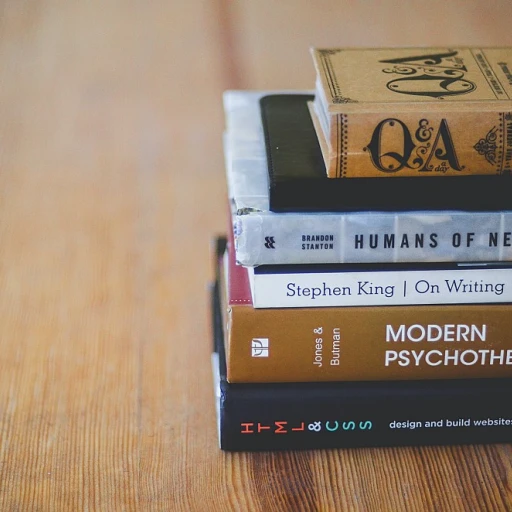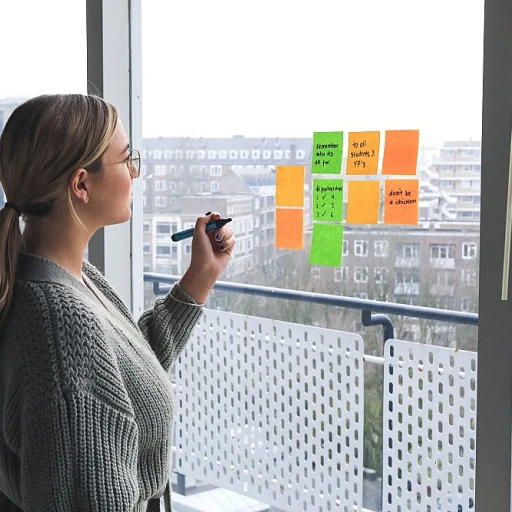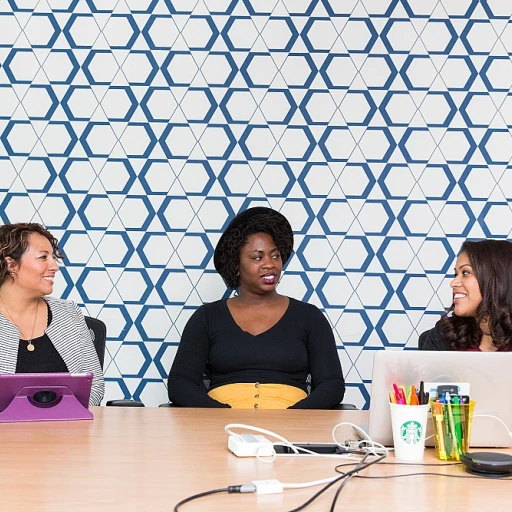
Understanding Creativity in the Workplace
Fostering a Creative Work Environment
In today's fast-paced work environment, creativity frequently finds itself at odds with time constraints and pressure. However, it is essential for organizations to nurture creativity among employees to boost efficiency and create a positive workplace culture. Oftentimes, creativity is perceived as a spontaneous and artistic endeavor. But in reality, fostering creativity requires intention and strategic development, especially under time pressure. To enhance creativity in the workplace, it's beneficial for organizations to encourage team members to engage in creative activities and share knowledge. Encouraging employees to regularly participate in collaborative sessions can spur both individual and team-based creativity. Studies have shown that a supportive work environment fosters psychological safety and reduces negative emotions, both crucial for unleashing creativity. Creative work is not just an artistic endeavor. It includes innovative problem-solving and effective time management, as employees can handle tasks with a more resourceful approach. While time management is key to meeting organizational goals, creativity plays a significant role in achieving these objectives without succumbing to stress. Encouraging employees to manage their work-life balance effectively can significantly boost their creativity and enhance their capacity to innovate. Organizations should strive to create a culture where individuals feel empowered to replace the stress of deadlines with positive and emotionally supportive strategies. This paves the way for creativity to flourish without impeding time management objectives. The relationship between creativity and time management is not set in stone. Still, as industry professionals strive to lessen the negative emotional impact of pressure, prioritizing knowledge-sharing and fostering passion can lead to significant improvements in organizational behavior. For more insights on promoting a conducive environment for creative innovation, explore effective ways to enhance internal communication for better work-life balance. This strategy can significantly contribute to creating a workspace where creativity and structure harmoniously coexist.The Link Between Creativity and Time Management
How Creativity Intersects with Time Management
Understanding the intricate relationship between creativity and time management can be somewhat complex, yet enlightening. While the notion of time management traditionally evokes images of rigid schedules and prioritized listicles, creativity introduces a dimension of flexibility and innovation into the mix. This relationship is partly explained by a psychological study that highlights how individuals who engage in creative activities experience a blend of positive and negative emotional undertones, which can be harnessed to propel productivity (Teresa Amabile et al.). Creative work can often lead to time pressure and stress; however, it is in balancing these tensions that creativity thrives. When team members openly share knowledge and collaborate, it often alleviates pressure, making creative time more structured and manageable. Employees proficient in knowledge sharing can foster a work environment where innovation and progress transpire effectively. One study in organizational behavior revealed that teams who engage in psychological sharing of creative ideas tackle tasks with renewed passion and emotional energy. This collective commitment can beautifully align time management with creative efforts, ensuring that while the clock ticks, innovation does not.Take a look at some effective strategies to inspire your team to excel that further exemplify how creativity combined with proper management can enhance productivity. Pressure and creativity often dance a delicate tango, with excessive pressure stifling innovation. On the other hand, optimal time pressure can act as a catalyst, propelling employees to channel positive energy into their work, discovering novel solutions in less time. In essence, understanding this intersection between pressure, people, and time management involves leveraging creativity to manage one's schedule without succumbing to negative emotions and stress.Creative Techniques for Better Time Management
Unleashing Creativity for Optimal Time Use
In the fast-paced environment of today’s workplace, using creative techniques can be instrumental in achieving effective time management. When time pressure becomes overwhelming, and stress levels rise, it becomes crucial for employees to tap into their creative potential. Leveraging creativity can transform how individuals approach their tasks and daily responsibilities. By adopting innovative strategies, employees can foster a more adaptable and efficient work environment.
Creative work often thrives on flexibility and unconventional thinking. Encouraging team members to engage in creative activities and explore new methods can lead to significant improvements in their organizational skills. By promoting knowledge sharing among team members, a culture of collaboration is fostered which can boost creativity and further improve time management. One study in organizational behavior illustrates that individuals who share knowledge and embrace diverse perspectives often generate more creative solutions under time pressure.
- Brainstorming Sessions: Regular brainstorming sessions can provide employees with the psychological freedom to think outside the box. By allowing ideas to flow without immediate judgment, team members will feel encouraged to innovate without the fear of negative emotions or stress.
- Flexible Schedules: Allowing flexibility in work schedules can enable employees to tap into their most creative and productive times of the day. Recognition that not all creative time coincides with standard office hours is critical.
- Embrace Digital Tools: Utilizing digital tools and virtual assistants can streamline communication and task management, freeing up time for more creative endeavors. These tools can facilitate efficient time management by automating repetitive tasks, thus allowing employees to focus on high-value creative work.
As individuals become more adept at balancing creativity with their tasks, they are likely to experience a boost in their emotional well-being and job satisfaction. Encouraging a culture that values creativity and flexibility can foster a positive work environment where employees feel motivated to continuously improve their time management techniques. Ultimately, this can lead to higher productivity and better alignment with organizational goals.
Balancing Creativity and Structure
Creating Harmony Between Order and Innovation
Balancing creativity and structure in the workplace can seem like a paradox; yet, it is a fundamental aspect of effective time management. Creative processes often thrive in environments where employees feel the freedom to explore, collaborate, and express their ideas without undue pressure. However, without a degree of structure, creativity can become chaotic, leading to inefficiencies and missed deadlines. Incorporating frameworks for balancing creativity with organizational goals can foster a positive environment where innovation and time management coexist. Strategies to maintain this balance include setting clear goals and timelines while allowing team members flexibility to engage in creative activities. Creating an atmosphere of knowledge sharing can enhance collective creativity within teams, which in turn positively affects time management efforts. The integration of a structured approach does not mean stifling creativity but rather channeling it in a way that drives productivity. Organizational behavior studies demonstrate that psychological safety is paramount; it permits employees to harness creativity without fear of negative emotional repercussions. Encouraging an environment where people feel motivated to take risks can enhance both creative work and time efficiency. Another effective technique is the use of time-blocking, where employees allocate specific time slots for creative tasks and more routine responsibilities. This approach helps in setting boundaries and reduces time pressure while fostering a disciplined but imaginative work environment. Moreover, practices like these have shown that a well-defined structure can mitigate stress and boost creative outputs without compromising on deadlines. Ensuring that these concepts are understood among team members involves open communication and encouraging feedback. Learning about the individual passions and strengths within a team can optimize creative outputs and promote efficiency. The relationship between effective time management and creativity is symbiotic, each enhancing the other when properly aligned. In conclusion, fostering a balance between creativity and structure can significantly improve both employee satisfaction and organizational performance. Doing so not only alleviates the negative emotions associated with the race against time but enriches the workplace with innovation and collaborative synergy.Overcoming Challenges in Creative Time Management
Confronting Challenges in Creative Time Performance
Balancing creativity with effective time management can be a challenging endeavor. It often requires individuals to navigate both psychological insights and emotional balances to ensure that neither pressure nor negative emotions derail their objectives. While many see creativity as a liberating force, it can sometimes become a source of time pressure, leading to stress if not managed well.
One of the primary challenges lies in managing the relationship between time and creativity innovation. Employees engaged in creative activities can often feel overwhelmed when time constraints impede their creative flow. A prevalent issue faced by many organizational structures is the balancing act of aligning individual passion with organizational goals without stifling creativity or innovation.
Crafting a Balanced Work Environment
Team dynamics play a substantial role in meeting these challenges head-on. Establishing a positive work environment where team members can openly share knowledge about creative endeavors is essential. Encouraging open communication and knowledge sharing not only fosters collaborative efforts but also allows employees to find innovative solutions to their tasks. This approach aligns with principles found in studies of organizational behavior that emphasize the importance of emotional and psychological safety in fostering creativity.
Additionally, integrating structured time management strategies, like those discussed earlier, helps mitigate the pressure individuals might feel. Keeping a clear separation between structured tasks and creative work enables employees to focus on creative tasks without the weight of restrictive time management bearing down on them.
Psychological Insights and Innovative Strategies
Studies have shown that when individuals feel empowered, their creativity flourishes, leading to enhanced productivity. Implementing strategies like flexible scheduling and allowing leeway in task completions can help mitigate the negative emotional impact of time constraints. Organizations focusing on these areas see improved performance and increased employee satisfaction, aiding in personal and professional growth.
Ultimately, conquering the challenges of creative time management involves finding an equilibrium between individual and collective goals. By fostering environments that allow creative ideas to thrive within structured frameworks, organizations can enhance overall productivity and maintain a healthy balance that benefits both employees and the organization.
Real-Life Examples of Creativity Enhancing Time Management
Illustrations of Enhanced Time Management Through Creativity
The integration of creativity within time management strategies has shown profound effects on achieving organizational goals. Various creative activities can significantly enhance the ability of individuals and teams to manage their time effectively.
One real-world example can be found in companies that encourage knowledge sharing among employees. By establishing a work culture that promotes open exchange of knowledge, employees can adopt more creative approaches to tasks, thereby maximizing productivity while encountering less pressure from time constraints.
In high-pressure environments like graphic design firms, some teams have incorporated flexible scheduling. This allows team members to allocate their peak creative hours to tackle tasks that require innovative thinking. As a result, there's a noticeable decrease in negative emotional responses among employees dealing with time pressure.
A study on organizational behavior highlighted initiatives where employees engaged in "creative sprints." These dedicated time blocks empower individuals to focus solely on innovation, fostering a positive emotional work environment, and improving time management throughout the organization.
Such examples illustrate how creativity can transform traditional approaches to time management. As teams and employees embrace these strategies, they not only enhance their ability to meet deadlines but also nurture a passion for their work. This balance between creativity and structure helps to alleviate stress and brings about sustainable productivity.












